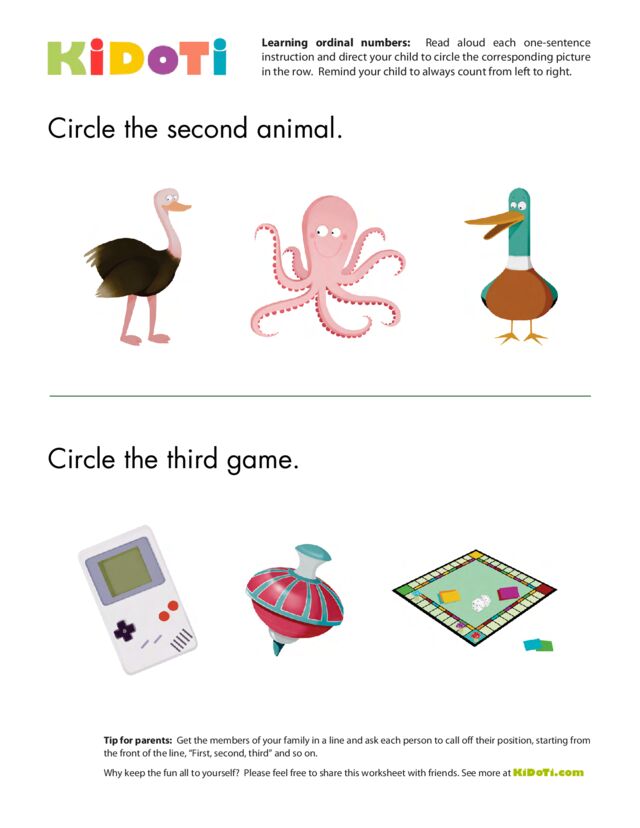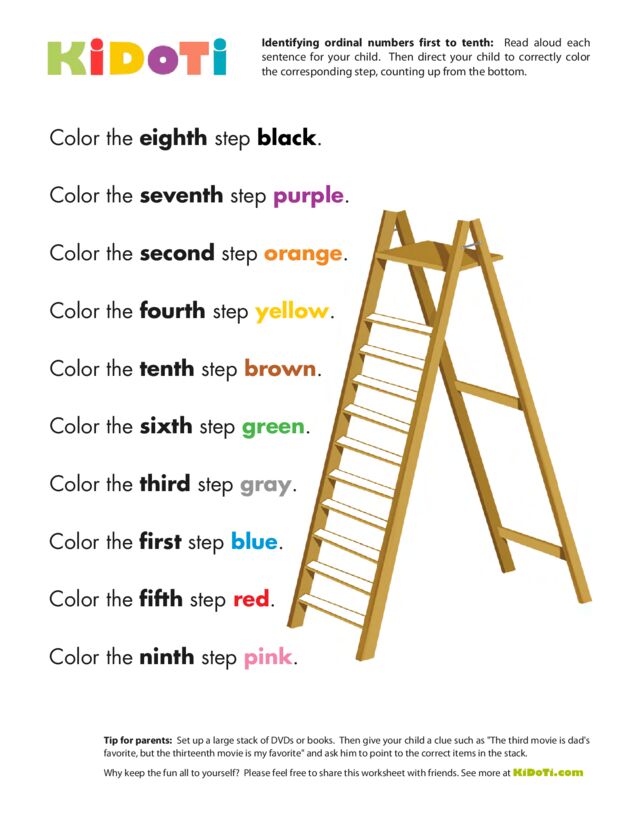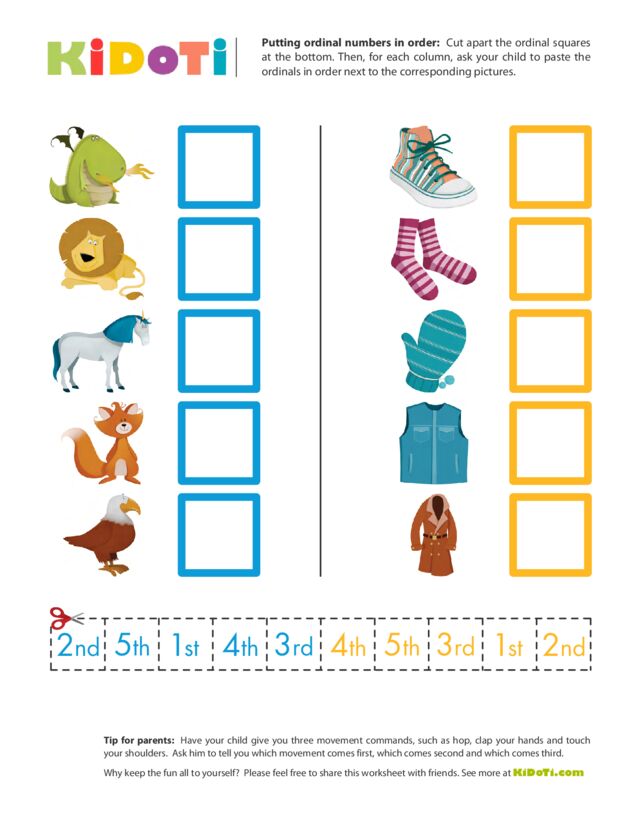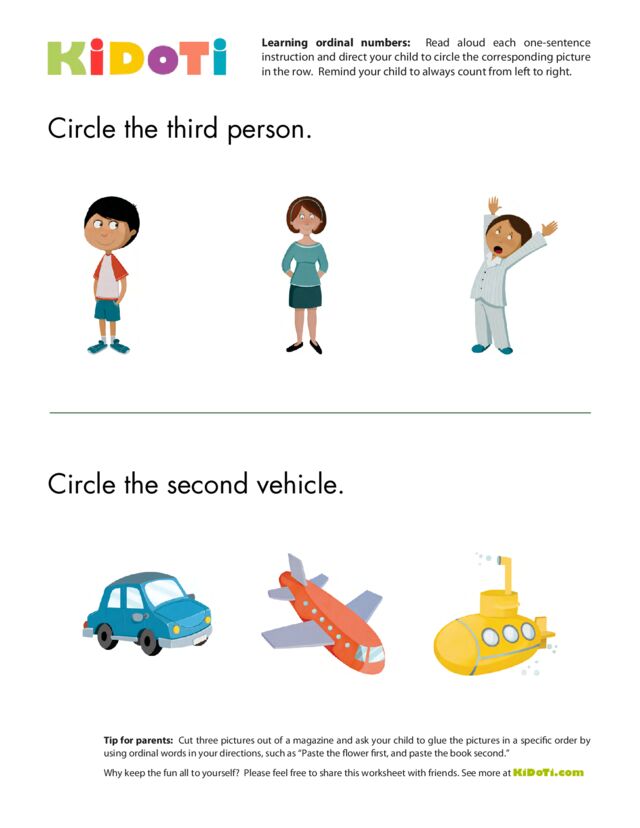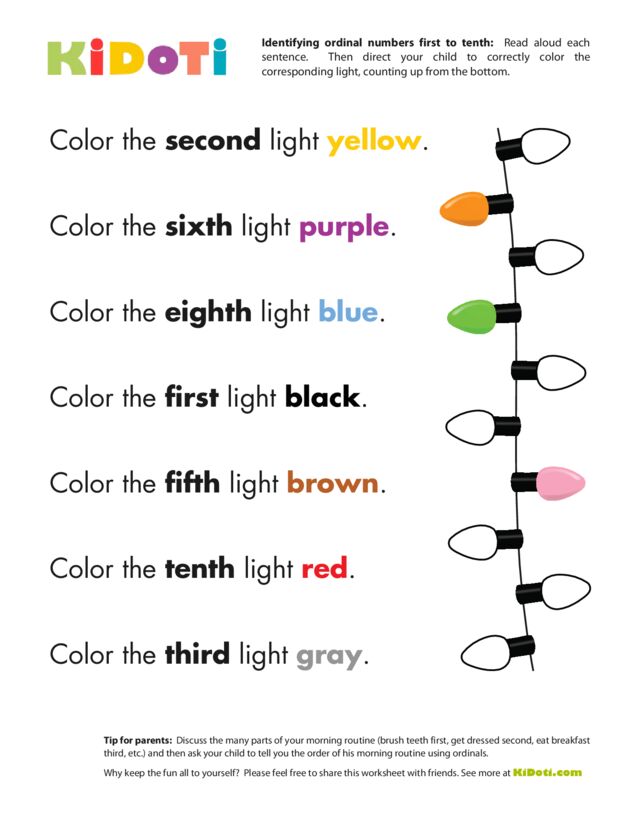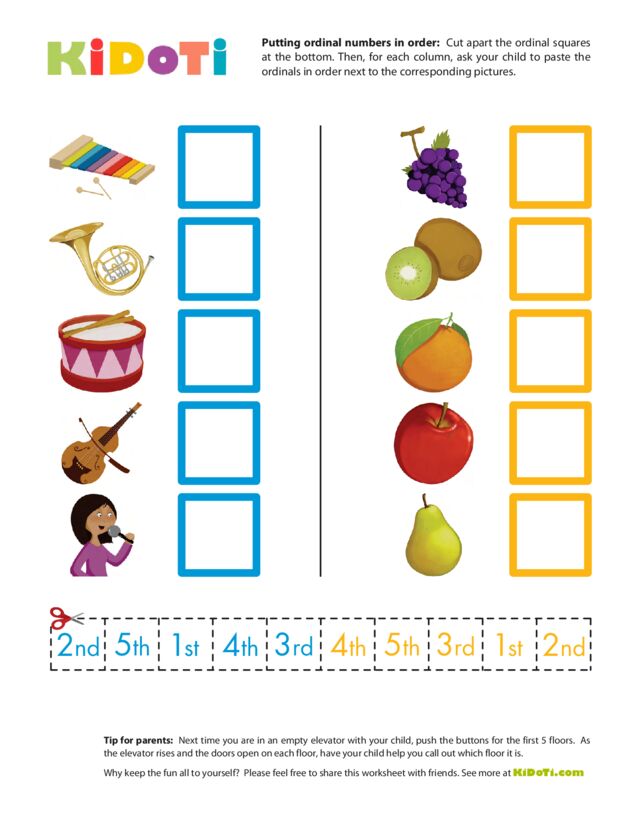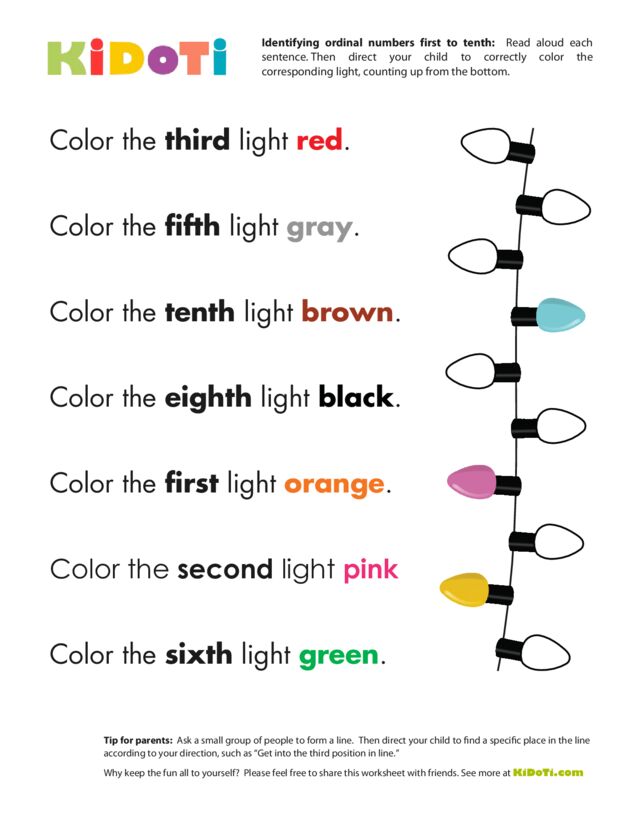For children to be able to understand and communicate positions, a knowledge of ordinal numbers is important. The first ten ordinal numbers (first, second, third, fourth, fifth, sixth, seventh, eighth, ninth and tenth) are the most commonly used and the first ordinal numbers children learn. When ordering positions beyond tenth, children only need to add the letters “th” to the end of the number to create the ordinal number.
Why ordinal numbers are important
Ordinal numbers are the words that tell us the order or position of things. Knowing these helps children communicate effectively and with less effort. It is much easier, for example, to identify someone in line as the fourth person, rather than having to explain specific details about that person (such as hair color or clothing) to identify the person.
Extra tips for using ordinal numbers worksheets
In the beginning level worksheets, focus on the three most commonly used (but most difficult to learn) ordinal numbers: first, second, and third. These ordinal numbers are difficult to learn because the word does not sound like the number it represents (unlike the ordinal tenth, for example, which follow the familiar pattern of adding the letters “th” to the end of the number’s name.
To help your child understand that these words indicate a numbered position, ask your child to first count using number words (“one, two, three”) as he points to each picture in the row. Next ask him to point and count again, this time using the ordinal numbers as he counts.
To help your child focus, you may want to fold the paper along the middle line to separate the blue side and the yellow side. Then ask your child to point to the bottom picture next to the blue boxes and count using ordinal numbers while he moves his finger up the line. Now he is ready to find the matching ordinal number and place that square in the empty box next to the picture. When all the squares are correctly placed in the blue boxes, your child may paste them on the paper. Then repeat the process with the yellow side of the page.
Activities to try at home to supplement the ordinal numbers worksheets
- Ask the members of your family to get in line and ask each person to call off their position using the correct ordinal number, starting from the front of the line: “First, second, third” and so on. Then you can continue the game by calling out directions such as “Will the third person in line run to the door and back as fast as they can?” or “Can the second person in line do ten jumping jacks?”
- Next time you are in an empty elevator with your child, push the buttons for the first five floors. As the elevator rises and the doors open on each floor, have your child help you in calling out the name of the floor using the correct ordinal number, such as “first floor … second floor … third floor … fourth floor … fifth floor.”
- Discuss the three steps (or more) that are involved with getting ready for bed (pajamas, teeth brushing, bedtime story), using the correct ordinal numbers. For example, explain how “First, we brush teeth. Second, we put on pajamas. Third, we read a book.” Ask your child to tell you which comes first, which comes second, and which comes third. Or, you can do the same game by talking about your morning routine of eating breakfast, getting dressed, brushing teeth, etc.
- Have your child give you three movement commands, such as hop, clap your hands and touch your shoulders. But ask him to tell you which movement comes first, which comes second and which comes third, using the correct ordinal numbers. Then complete the movements in order and have him tell you if you did them in the correct order.
- Cut three pictures out of a magazine (or ask your child to do the cutting). Then ask him to glue the pictures in a specific order by using ordinal number words in your directions. For example, ask him to: “Paste the flower first, the book second, the ball third and the dog fourth.” Or, grab a handful of your child’s small toys. Then, hand your child the group of toys and ask him to put them in a line, giving him directions using ordinal numbers. For example, as him to “Put the stuffed bear in line first. Put the truck in line second. Put the airplane in line third” and so on.
